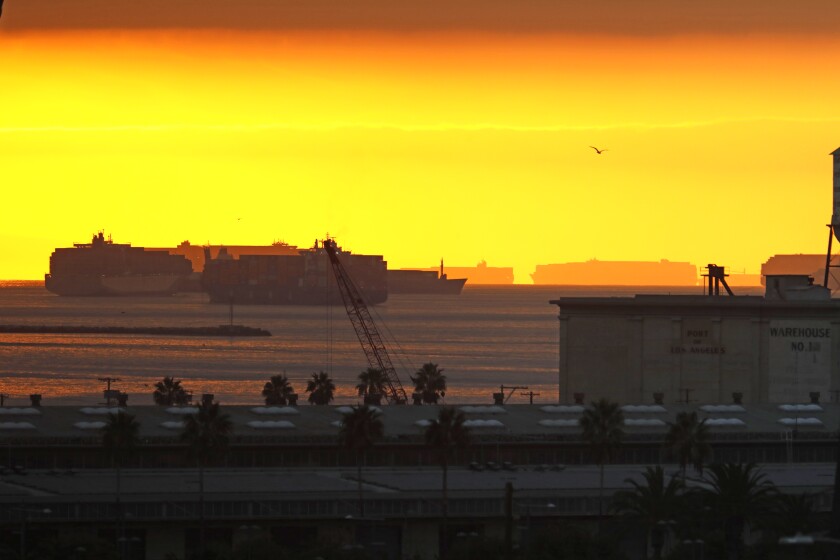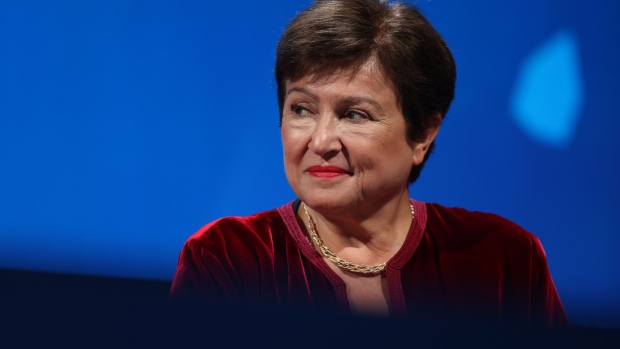Employees at a fast-food restaurant in Sacramento, exasperated over working in stifling heat for low wages, demanded more pay and a new air conditioner — and got both.
Orders poured in to an Italian auto supplier, which struggled to get hold of enough supplies of everything from plastic to microchips to meet the demand.
A drought in Taiwan magnified a worldwide shortage of computer chips, so vital to auto and electronics production.
The global economy hadn’t experienced anything like this for decades. Maybe ever.
After years of ultra-low inflation, prices rocketed in 2021 — at the grocery store, the gasoline pump, the used-car lot, the furniture store.
U.S. workers, having struggled for years to achieve economic gains, demanded better wages, benefits and working conditions — and were willing to quit if they didn’t get them.
Global supply chains that ran efficiently for years broke down as factories, ports and freight yards buckled under the weight of surging orders.
Propelled by vast infusions of government aid and the widespread distribution of COVID-19 vaccines, the world economy’s bounce-back was as startling as the fall that preceded it. Policymakers were caught off guard by both the speed of the recovery and the new COVID variants that threatened it.
Back from the brink
In spring 2020, the global economy stood at the brink of a catastrophe. The spread of COVID-19 forced lockdowns, frightened people into hunkering down at home, paralyzed ordinary business activity.
In June that year, the International Monetary Fund predicted that the global economy would shrink 4.9% in 2020.
But the governments of the wealthiest nations, scarred by the slow recovery from the financial crisis just over a decade earlier, poured money into rescuing their economies. The United States was particularly aggressive: It supplied $5 trillion in COVID-related aid.
Stimulus helped stave off disaster. The global economy did shrink in 2020 — but only by 3.1%. The IMF now expects record 5.9% growth for 2021.
Beginning this year, vaccines accelerated the return to something closer to ordinary pre-pandemic life.
Still, the virus itself has continued to complicate the recovery. Infections over the summer, for instance, sent Japan’s economy into a tailspin: It shrank from July through September at a 3.6% annual rate.
Likewise, America’s recovery lost momentum once the highly contagious Delta variant erupted over the summer. Growth slowed to a 2.1% annual rate from July through September from 6.7% in the April-June quarter and 6.3% in the January-March period.
Overall, though, the economy has recovered with surprising vigor. In June 2020, with the economy still reeling, the Federal Reserve forecast that unemployment would average 9.3% in the final three months of the year and 6.5% at the end of 2021. In reality? The jobless rate plummeted from 11.1% in June 2020 to 6.7% by year’s end. It’s now at 4.2%.
Overwhelmed
In some ways, it’s been too much of a good thing.
Robust demand, especially for autos, appliances and other physical goods, overwhelmed global manufacturers. Factories couldn’t obtain enough raw materials and parts. Ports and freight yards were swamped.
The supply chain problems have been compounded by the unexpected — a drought in Taiwan that curtailed production at water-dependent computer chip plants, a February deep freeze that paralyzed petrochemical production in Texas, a huge container ship getting stuck in the Suez Canal and cutting off shipping between Asia and Europe.
Pointing to a 40% reduction in ships anchored off Los Angeles and Long Beach, port officials say new rules are helping with the supply chain backlog and local air quality. But it all depends what you’re counting.
Companies grappled with shortages of everything they needed, notably workers.
At the Gotham restaurant in Manhattan, for instance, patrons can’t find handcrafted chocolates, once a big draw for the holidays, or grab a burger or order oysters. Gotham couldn’t find enough employees to make the chocolates, work the grill or shuck the oysters.
Across the Atlantic, MTA, an auto components manufacturer that endured Italy’s first lockdown in February 2020, reopened within a week and ended 2020 with unexpectedly healthy business. But the recovery bred new troubles.
“Everything is lacking,” said Maria Vittoria Falchetti, the company’s marketing chief. “Plastic is lacking. Metals are lacking. Paper is lacking. Microchips — don’t even mention.’’
South of Shanghai, Kaixiang Electric Appliance Co., which makes LED lamps and flashlights in Ningbo, paid 20% more in 2021 for labor, materials and complications resulting from shipping bottlenecks. “The current delay in delivery is about one or two months,” said Susan Yang, chief executive of the 80-employee company.
The supply chain bottlenecks have driven up costs, contributing to a problem that most rich countries hadn’t had to endure for years: high inflation. The IMF expects consumer prices in advanced economies to rise 2.8% this year. That would be the highest such rate since 2008.
Last month, U.S. consumer prices shot up 6.8% from 12 months earlier — the biggest year-over-year increase since 1982.
At a Mobil station in Yonkers, N.Y., Mario Bodden, a project manager at a nearby mall, said it cost $50 to fill up, instead of the $35 he was used to. “You start thinking: Do I go shopping? Do I fill it up today?” Bodden said.
A made-in-America labor shortage
Even while absorbing higher prices, workers, especially in America, were benefiting from a tighter labor market that gave them leverage to secure better pay and benefits.
The United States, in particular, experienced acute labor shortages. At the depths of the pandemic recession in spring 2020, employers had slashed 22 million jobs. When the economy bounced back, they scrambled to recall laid-off workers — or find new ones. In September and October, employers listed a record 1.4 job openings for every unemployed American.
In Europe, by contrast, governments essentially paid companies to keep workers on their payrolls, making it “much more seamless to reopen the economies in Europe because basically people just went back to their old job,” said Jacob Kirkegaard of the German Marshall Fund of the United States.
U.S. workers have used their leverage to press for higher wages and better working conditions. Frito-Lay workers went on strike in July to protest mandatory overtime. At Deere & Co., thousands struck in the fall — and won 10% raises.
At a Jack in the Box restaurant in Sacramento, workers walked off the job to protest working conditions, including an air conditioner that constantly broke down and forced them to toil in 100-degree heat. In response, the restaurant installed a new air conditioner and raised wages $1.25 an hour.
“Every little bit helps,” said one of the workers, Leticia Reyes.
Associated Press writers Anne D’Innocenzio, Mae Anderson, Cathy Bussewitz, Tom Krisher, Colleen Barry, Joe McDonald, Christopher Rugaber, David McHugh and David Koenig contributed to this report.


















